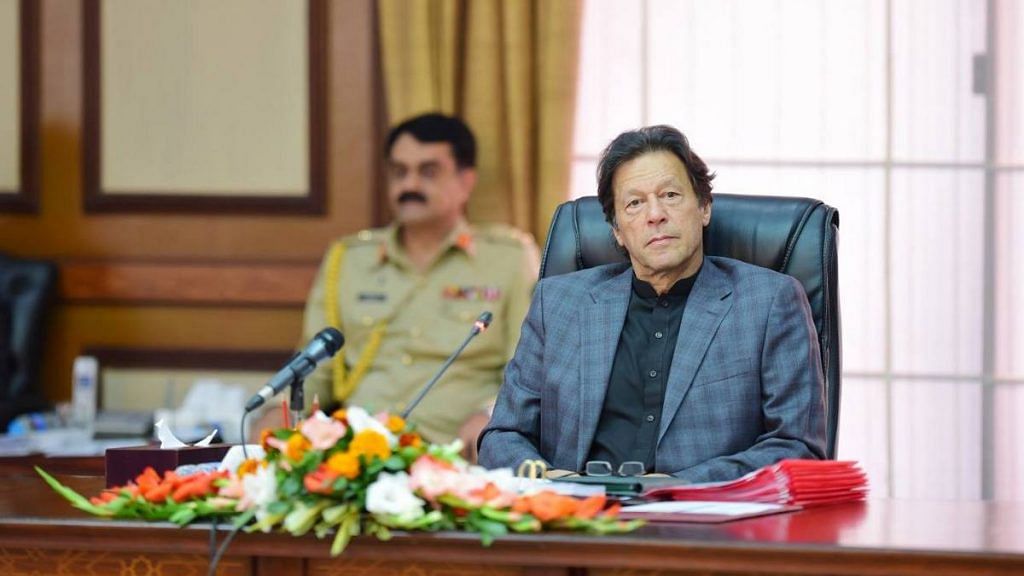This is the first time since Partition in 1947 that visa-free access to Sikh pilgrims will be allowed into Pakistan.
New Delhi: The Imran Khan government is throwing open the international border at Wagah, Punjab, not only for all Sikh pilgrims wanting to attend the ground-breaking ceremony of the Kartarpur Sahib corridor on 28 November, but also for a handful of Indian journalists.
The unprecedented public relations exercise expected from the coverage of that event will certainly rival the election in Madhya Pradesh and Mizoram on that day.
The fact that Indian journalists are also being invited, as guests of the Pakistan government, is indicative of the Imran Khan government’s decision to unilaterally introduce some people-to-people confidence-building measures that ease the tension on the ground.
This is the first time in 71 years, since Partition that the border is being opened up for visa-free access.
Significantly, the Kartarpur Sahib corridor ground-breaking ceremony is taking place exactly a day after the tenth anniversary of the Mumbai attacks.
Also read: Why Kartarpur Sikh corridor is a very big deal for India-Pakistan relations
Pakistan initiative
Pakistani analysts are not willing to comment on the timing — coincidence or deliberate — of the ceremony, but Pakistan Information Minister Fawad Chaudhry had told ThePrint after the failed foreign minister-level talks in September that Pakistan was determined to open up the border.
These initiatives, he had said, included allowing Indian journalists to travel to Pakistan to cover stories, as well as post a few inside Pakistan.
The move to build the Kartarpur Sahib corridor allowing Indian Sikh pilgrims visa-free access to one of their holiest shrines — Sikhism founder Guru Nanak died there in the 16th century — is a huge leap forward on the India-Pakistan agenda.
India’s high commissioner to Pakistan Ajay Bisaria has told Dawn newspaper that both governments are still considering the model to be adopted — visas and passports through the Wagah border or a travel permit as is prevalent across the Line of Control for those who take the Srinagar-Muzaffarabad bus.
Also read: Kartarpur Sahib corridor is another U-turn by Modi govt on its Pakistan policy
Modi government turnaround
In what constitutes a major U-turn on its Pakistan policy, the Narendra Modi government was forced to go back on its own decision Thursday spurning the Pakistani proposal to open up Kartarpur Sahib.
Congress MP Navjot Singh Sidhu had brought back in August an offer from Pakistan Army chief Gen Qamar Javed Bajwa that both sides build facilities for Sikh pilgrims and open up the corridor — “langah” in Punjabi — from Dera Baba Nanak in the Indian Punjab to Kartarpur Sahib in Pakistani Punjab.
Bajwa’s proposal to Sidhu meant that the military establishment was on board the Imran Khan government’s decision to unilaterally introduce these pro-people measures.
Both India and Pakistan know that the major disputes over terrorism or Kashmir are not going to be resolved so easily.
Pakistan’s proposal to delink pro-people measures, such as pilgrim access, from these major disputes is a big change in Islamabad’s thinking on the India-Pakistan question.
The Modi government, however, first turned down Sidhu’s proposal and then cancelled the foreign minister-level meeting with Pakistan at a 24-hour notice.
But the Kartarpur Sahib issue is far too important for Punjab, which is going to polls in six months and where the BJP’s ally, the Shiromani Akali Dal, is not doing well politically.
Modi may have now realised that he could take credit for opening up Kartarpur Sahib.
For the time, though, Pakistan seems to have run away with the propaganda baton.
